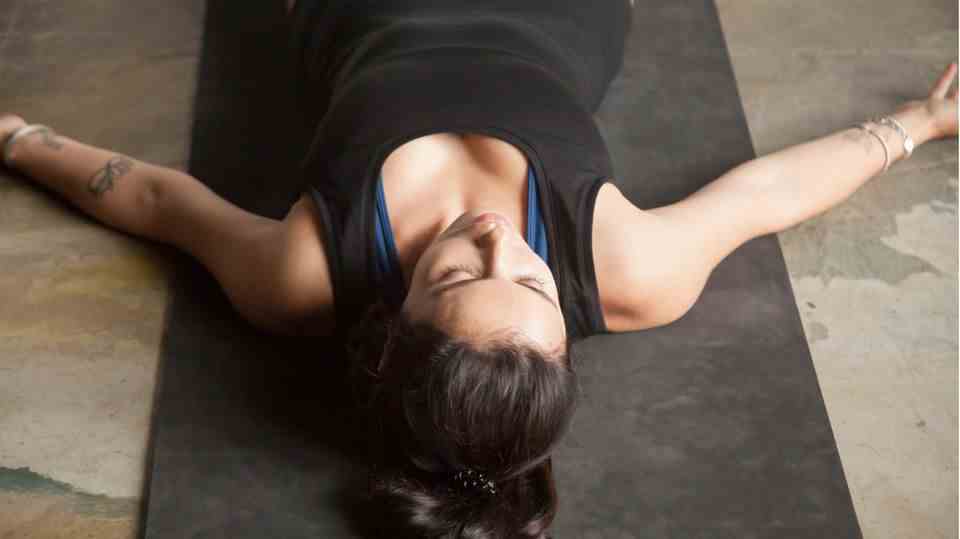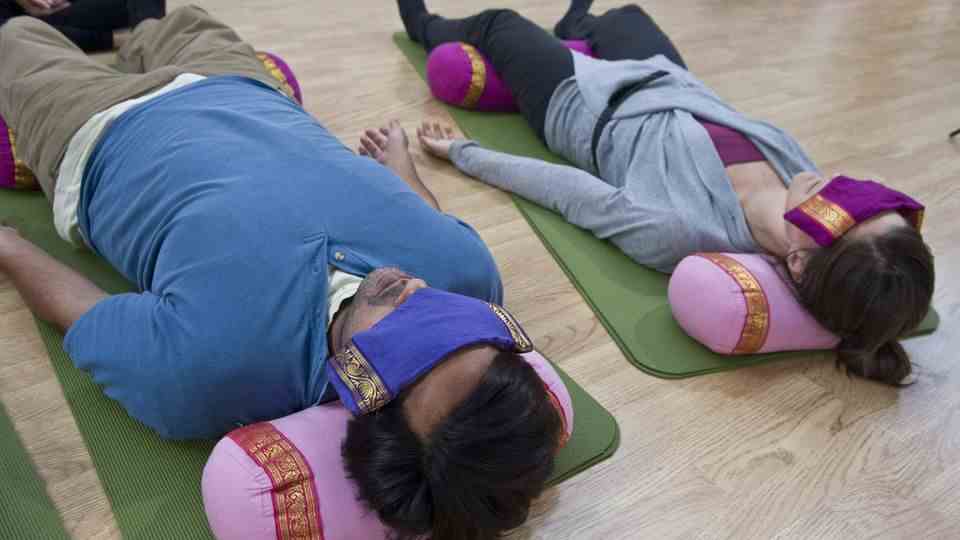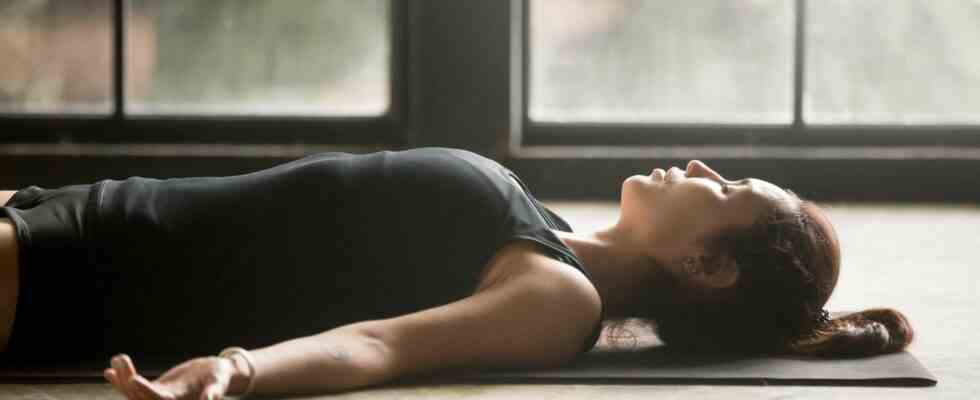Yoga Nidra is an ancient relaxation technique designed to expand perception and awareness. If you remain mindful, you can experience a state between sleep and wakefulness.
What is Yoga Nidra?
Yoga Nidra (in English: “The conscious yogic sleep”) is a method for deep relaxation. In contrast to dynamic, demanding yoga directions, Yoga Nidra is more like a guided meditation. Meanwhile, you lie motionless on your back in the so-called dead pose (Savasana).
Tanja Seehofer, consciousness researcher, mental coach, human geneticist and Yoga Nidra teacher for more than ten years, describes the relaxation method as expanding consciousness and training the senses. “Hearing, feeling and perception are the focus here,” she explains in an interview with the star.
What is a Yoga Nidra class like?
“An important starting point is mindfulness,” says Tanja Seehofer. Once you have positioned yourself on your back, you should concentrate on the sounds in the room and outside to slowly calm down.
Then each participant sets a so-called Sankalpa for themselves. “A positive intention or wish formulated as a simple sentence,” explains the expert. You should not choose a new affirmation every hour, but keep the sankalpa until you consider it fulfilled.
After that, the perception of the practitioner is directed to different parts of the body in a specific order. “That should happen without effort and without thinking, you should just be encouraged to focus here,” emphasizes Tanja Seehofer. Next, the attention moves to the breath, which should further increase relaxation and mindfulness.

In Yoga Nidra you lie in the so-called corpse pose: your eyes are closed, your arms and legs are spread out so that they do not touch your body.
© fizkes / Imago Images
The next stage relates to the feeling and emotion level. “Different feelings and sensations are awakened, experienced again and perceived,” explains the consciousness researcher. This happens on the one hand with so-called pairs of opposites such as warmth and cold or heaviness and lightness, and on the other hand with images from everyday life. According to the expert, visualizing strengthens imagination and intuition. The teacher also mentions terms that have been saved negatively. These should be brought into consciousness so that they can then be processed more easily.
In the next step, the teacher leads through an imaginary journey in which only positive images are evoked. This “creates pleasant feelings that are linked neurally in the brain,” says Tanja Seehofer. In the end, the practitioner’s mind is very receptive to the sankalpa. Finally, the teacher brings the participants back to the present by bringing awareness back to the breathing and sounds.
What is special about Yoga Nidra?
During the Yoga Nidra class, the frequency of the brain waves changes, the expert explains. When awake, the human brain generates beta waves. In Yoga Nidra, it’s alpha waves, a “state of supreme consciousness in which the mind is awake and the body is deeply relaxed,” says the yoga teacher. The participant often perceives this as a state between being awake and asleep.

To completely relax, the eyes can also be covered.
© ZUMA Wire / Imago Images
“During the yoga nidra journey, alpha frequency increases more and more and then stays until the end”. An extraordinary phenomenon according to Tanja Seehofer. You can gain better access to the unconscious and intuition via the alpha waves. The waves can only arise when the participants remain awake, motionless and consciously follow the Yoga Nidra journey.
What do I have to consider when doing Yoga Nidra?
“A yoga nidra class requires time, silence and absolute calm,” says Tanja Seehofer. The practitioner should lie motionless and relaxed on the floor without arms, legs or hands touching the body. The eyes should be closed and the room should be darkened. You should also dress warmly enough. “If you’re cold while you’re doing it, it distracts you,” emphasizes the teacher.
What is the difference between Yoga Nidra and meditation?
The consciousness researcher describes the relaxation technique as “a lighter form of meditation”. Since the practitioner is guided by the teacher, it is easier to follow the process. “You don’t really have to do anything but lie down and listen,” summarizes the expert. This is easy to do even for beginners. A yoga nidra journey also allows you to reach a deeper state of relaxation.
What is the difference between Yoga Nidra and Hypnosis?
During hypnosis, the brain can also be permeated by alpha waves, but only temporarily. That’s why “consciousness expands further during Yoga Nidra,” explains Tanja Seehofer. In hypnosis, verbal instructions are given. It is different with Yoga Nidra: Here the teacher should announce in a monotonous voice so as not to influence the practitioner on the different emotional levels. Each participant should perceive the Yoga Nidra journey individually.
How Does Yoga Nidra Affect Health?
Tanja Seehofer lists a number of positive effects that Yoga Nidra can have on physical and mental health in the long term. While you can feel the relaxation right after the lesson, it is important for the long-term effects that you practice regularly. If you practice the relaxation method continuously, you could feel the following effects, among others:
- physical, mental and emotional relaxation, stress reduction
- increased ability to concentrate and more energy during the day
- better sleep
- Calming and deepening of breathing
- Stabilization and strengthening of the immune system
- Slowing down and strengthening of the heartbeat
- improved body awareness
- Training of consciousness and intuition
Can I practice Yoga Nidra at home?
The consciousness researcher advises beginners in particular not to practice Yoga Nidra with instructions from the Internet. “I would take a class with a trained teacher to start with,” she says. For the relaxation to really work, the teacher must guide and accompany the journey professionally.

Tanja Seehofer has been teaching Yoga Nidra for more than ten years.
© Tanja seehofer
In addition, in a yoga studio “a place of rest and complete silence is guaranteed”. Basically, you can also practice Yoga Nidra at home. The expert recommends asking a trained teacher for tips on CDs or YouTube channels. Tanja Seehofer herself also offers her own Yoga Nidra CD.

